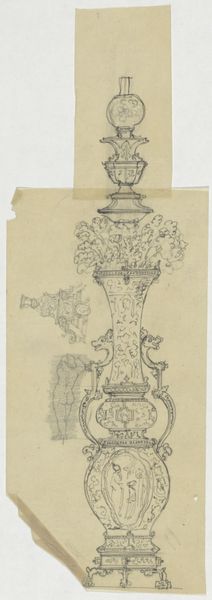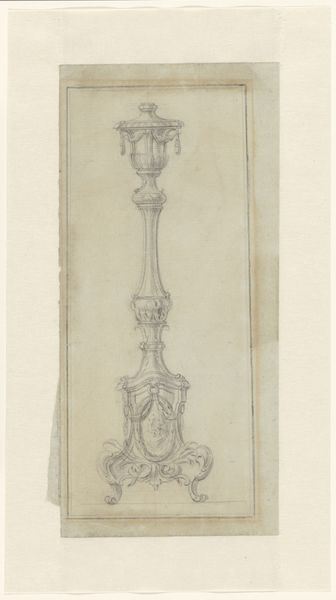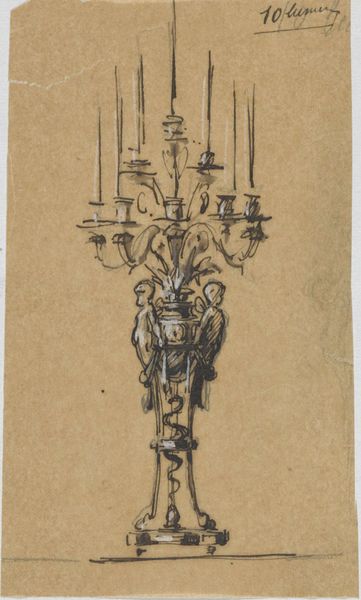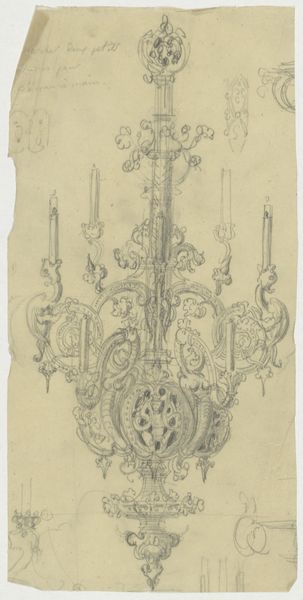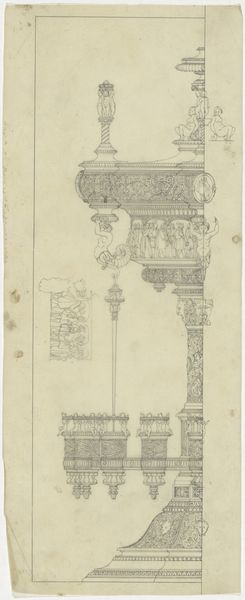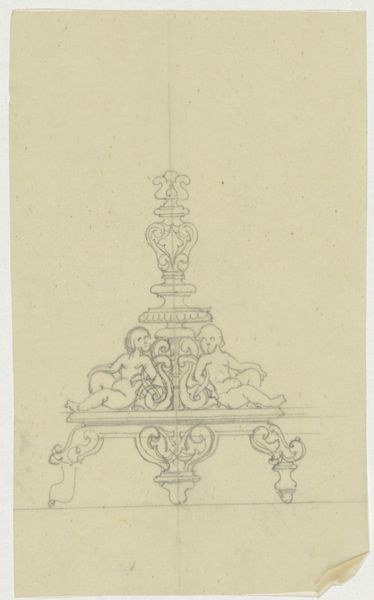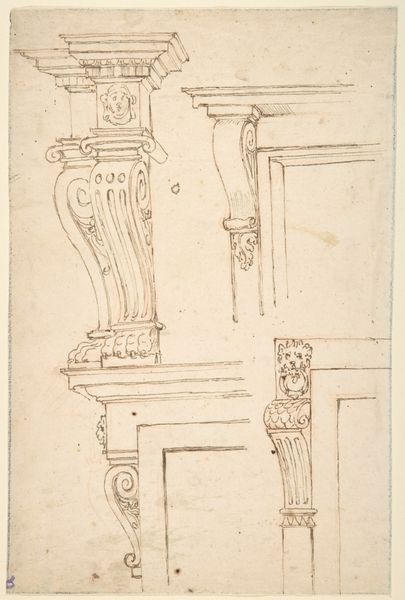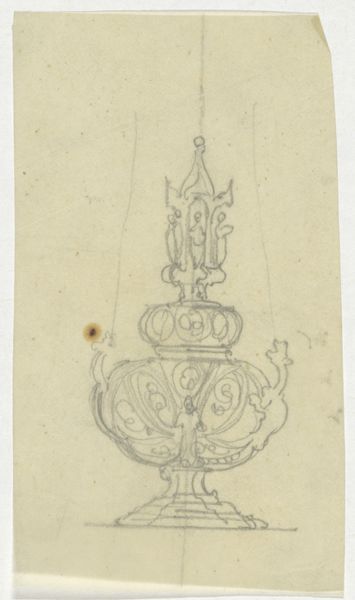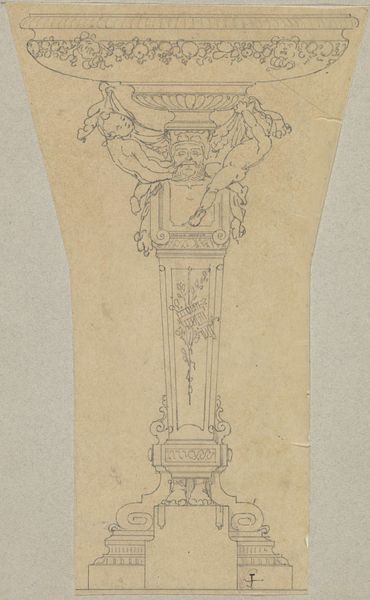
drawing, paper, pencil
#
drawing
#
paper
#
form
#
pencil
#
line
#
academic-art
Dimensions: height 89 mm, width 150 mm
Copyright: Rijks Museum: Open Domain
Editor: Here we have “Sleutel,” a drawing, dating from around 1830 to 1850, attributed to Firma Feuchère. It’s done with pencil on paper, and what stands out to me are these incredibly ornate designs for keys. It feels almost whimsical. What catches your eye? Curator: I am intrigued by the method of production for the design itself. Before industrial manufacturing became widespread, objects like keys – especially decorative ones – required significant handcraftsmanship. Look at the drawing's details; each flourish and cherubic figure would have been carefully shaped using specialized tools. Consider, too, the socio-economic status implied by such an elaborate key design. Was this commissioned for a wealthy client? Who would have been the intended user, and how might that detail be inferred by this image's detail? Editor: That's a fascinating point – the connection to labor and social class. I hadn't considered that this drawing is essentially a record of skilled labor and material aspiration. So, it speaks not just to the key's function, but the status it conveys. Curator: Precisely. And by studying this drawing, we begin to think about the whole chain of production. Where did the materials for both the key and the design originate? What specific expertise was required at each stage? The drawing is then more than just an image: It becomes an artifact representative of production in the late industrial revolution. Editor: So, it’s about understanding the entire material network and social conditions surrounding even a seemingly simple object like a key. Curator: Exactly! Approaching art through a materialist lens encourages us to question the object’s journey – from the raw materials to its eventual function. Editor: This has totally reshaped how I'm seeing it. I had initially reacted to it from a visual appeal stance only but now understand this key's history can give me a social, and class, framework. Curator: A beautiful outcome to this experience. Seeing an artifact as the end point in a global chain helps uncover the layers of human engagement necessary for design and completion.
Comments
No comments
Be the first to comment and join the conversation on the ultimate creative platform.
